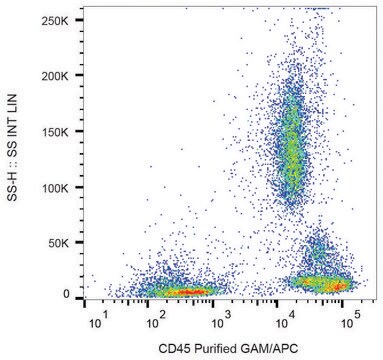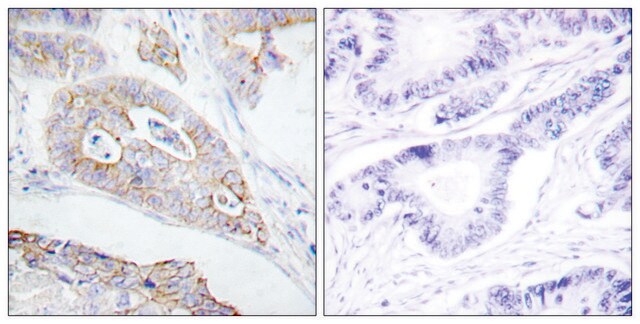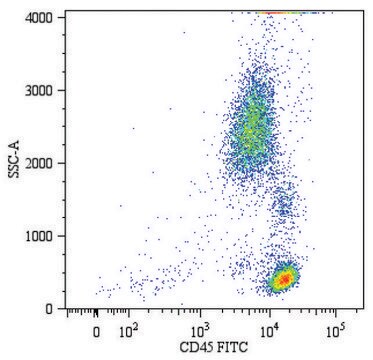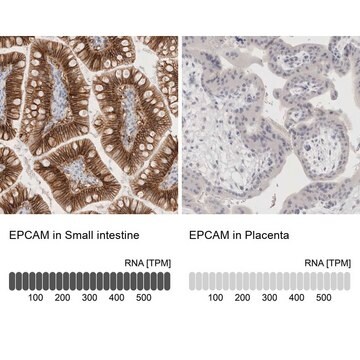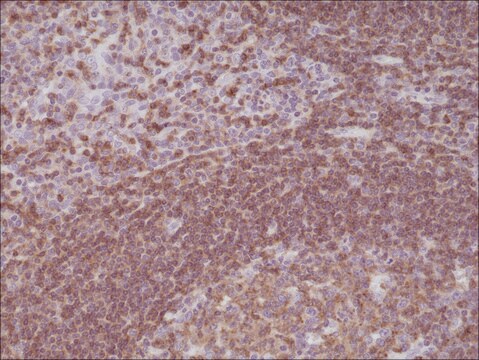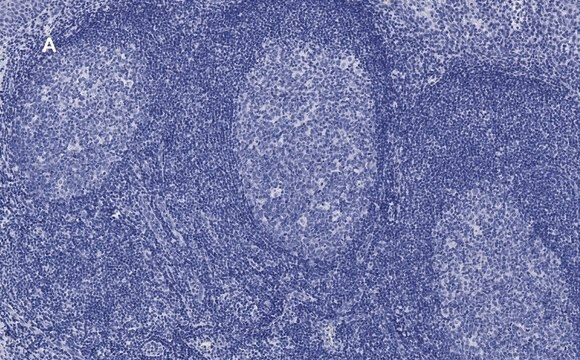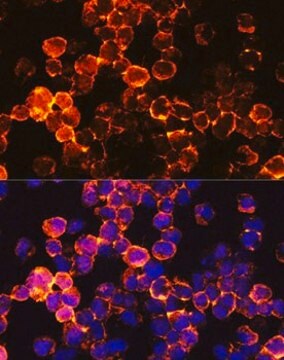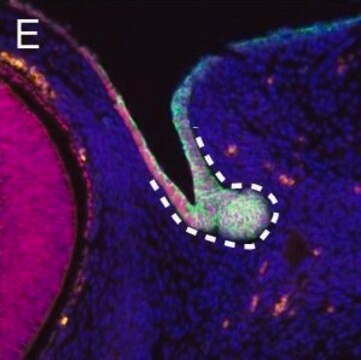MABF320
Anti-CD45 (mouse) Antibody, FITC, clone 30-F11
clone 30-F11, from rat, FITC conjugate
Sinónimos:
Receptor-type tyrosine-protein phosphatase C, Leukocyte common antigen, L-CA, T200, CD45
About This Item
Productos recomendados
origen biológico
rat
conjugado
FITC conjugate
forma del anticuerpo
affinity isolated antibody
tipo de anticuerpo
primary antibodies
clon
30-F11, monoclonal
reactividad de especies
mouse
técnicas
flow cytometry: suitable
immunohistochemistry: suitable
immunoprecipitation (IP): suitable
western blot: suitable
isotipo
IgG2bκ
Nº de acceso UniProt
Condiciones de envío
wet ice
modificación del objetivo postraduccional
unmodified
Información sobre el gen
human ... PTPRC(5788)
Descripción general
Inmunógeno
Aplicación
Inflammation & Immunology
Cytokines & Cytokine Receptors
Immunohistochemistry Analysis: A representative lot detected human CD45 in Immunohistochemistry. (Simon DI, et al. 2000; Cornet A, et al. 2001)
Immunoprecipitation Analysis: A representative lot detected human CD45 in Immunoprecipitation. (Ledbetter JA, et al. 1979)
Calidad
Flow Cytometry Analysis: 0.25 μg of this antibody detected CD45 in one million C57BL/6 mouse splenocytes.
Descripción de destino
Forma física
Almacenamiento y estabilidad
Otras notas
Cláusula de descargo de responsabilidad
¿No encuentra el producto adecuado?
Pruebe nuestro Herramienta de selección de productos.
Código de clase de almacenamiento
10 - Combustible liquids
Clase de riesgo para el agua (WGK)
WGK 2
Certificados de análisis (COA)
Busque Certificados de análisis (COA) introduciendo el número de lote del producto. Los números de lote se encuentran en la etiqueta del producto después de las palabras «Lot» o «Batch»
¿Ya tiene este producto?
Encuentre la documentación para los productos que ha comprado recientemente en la Biblioteca de documentos.
Nuestro equipo de científicos tiene experiencia en todas las áreas de investigación: Ciencias de la vida, Ciencia de los materiales, Síntesis química, Cromatografía, Analítica y muchas otras.
Póngase en contacto con el Servicio técnico